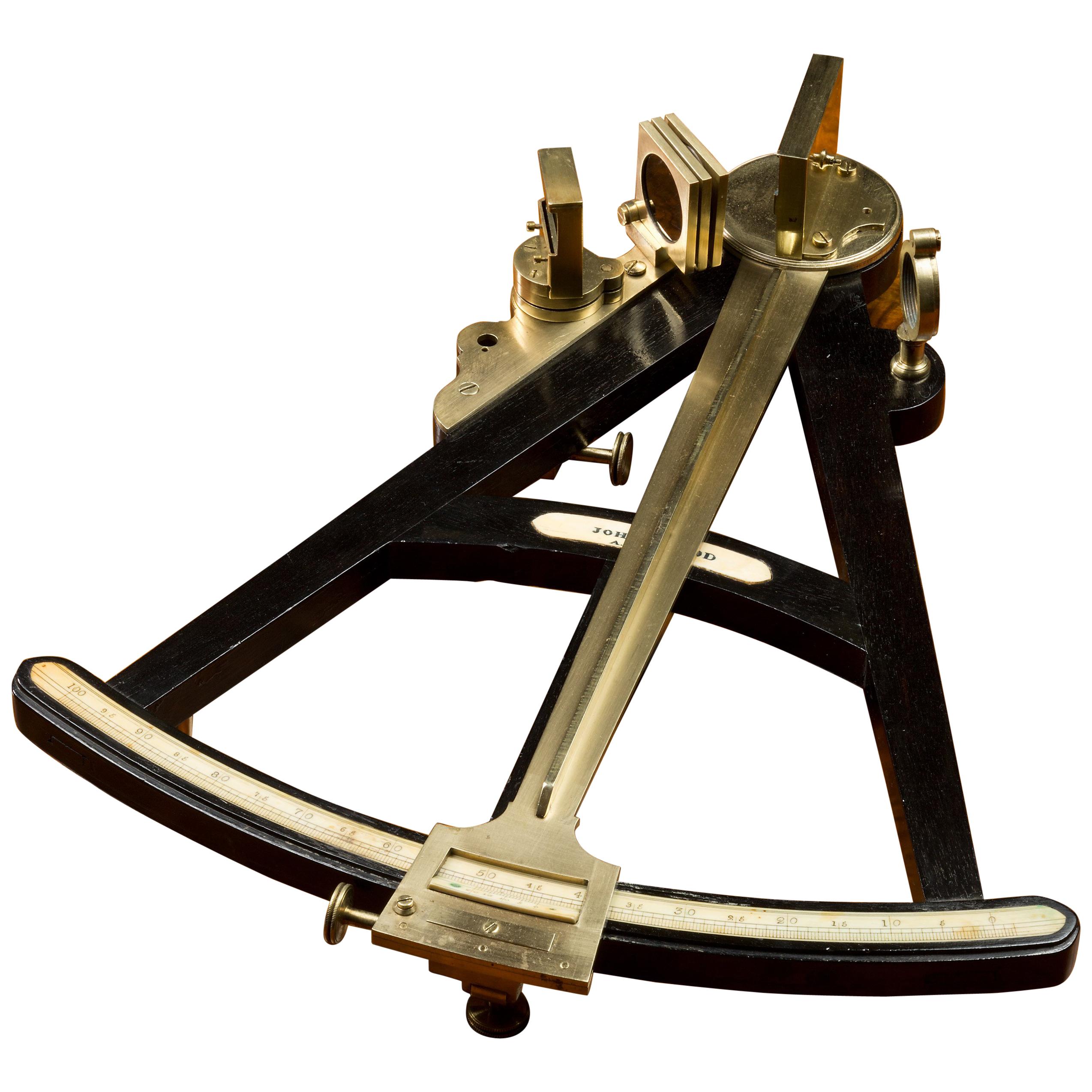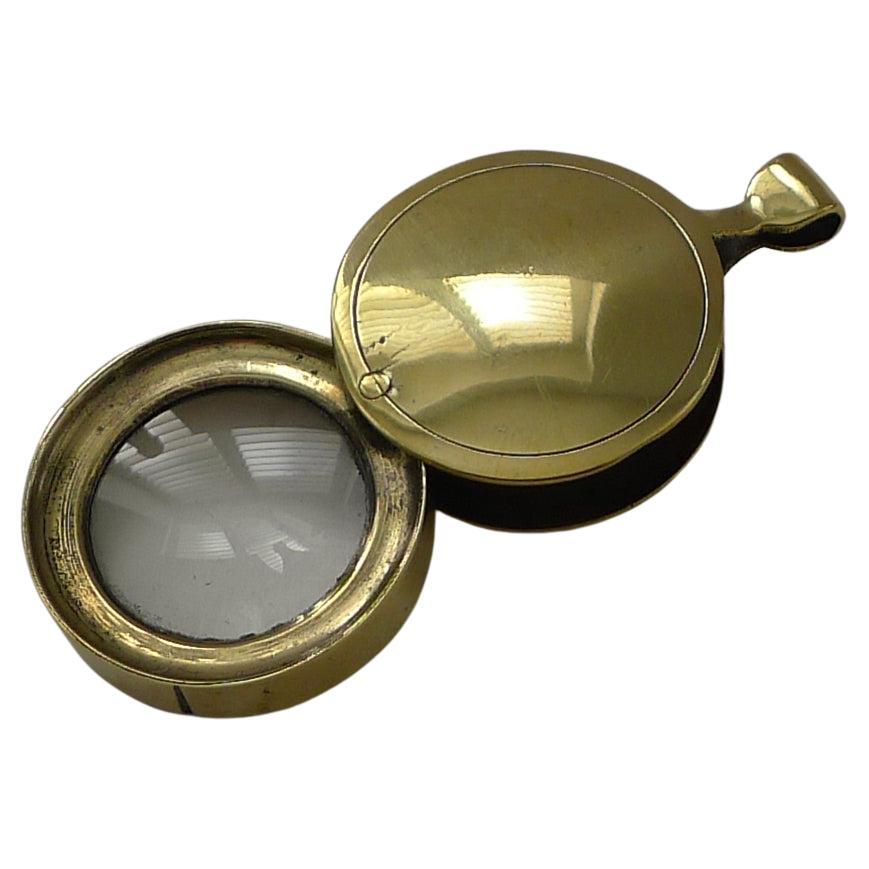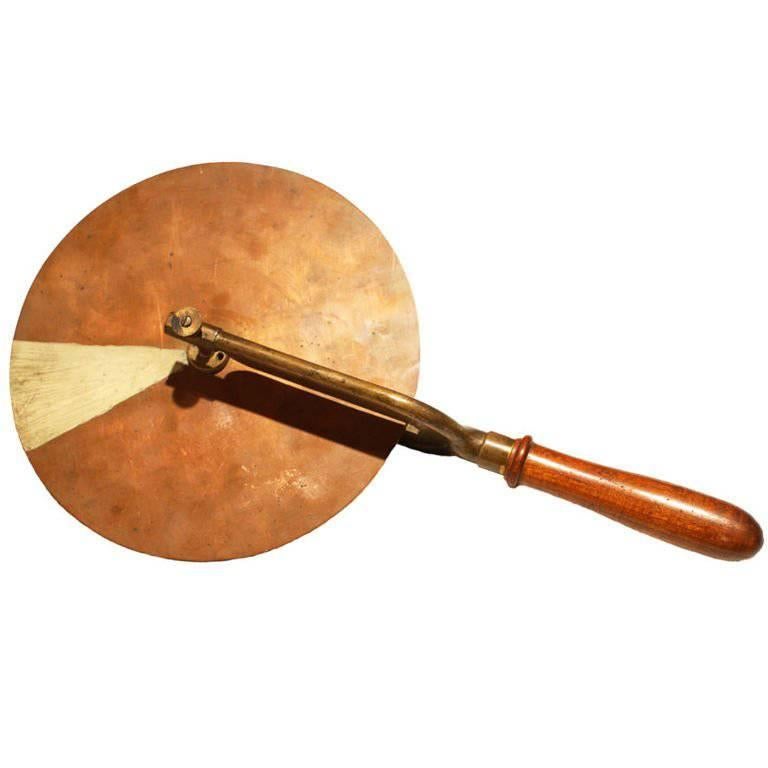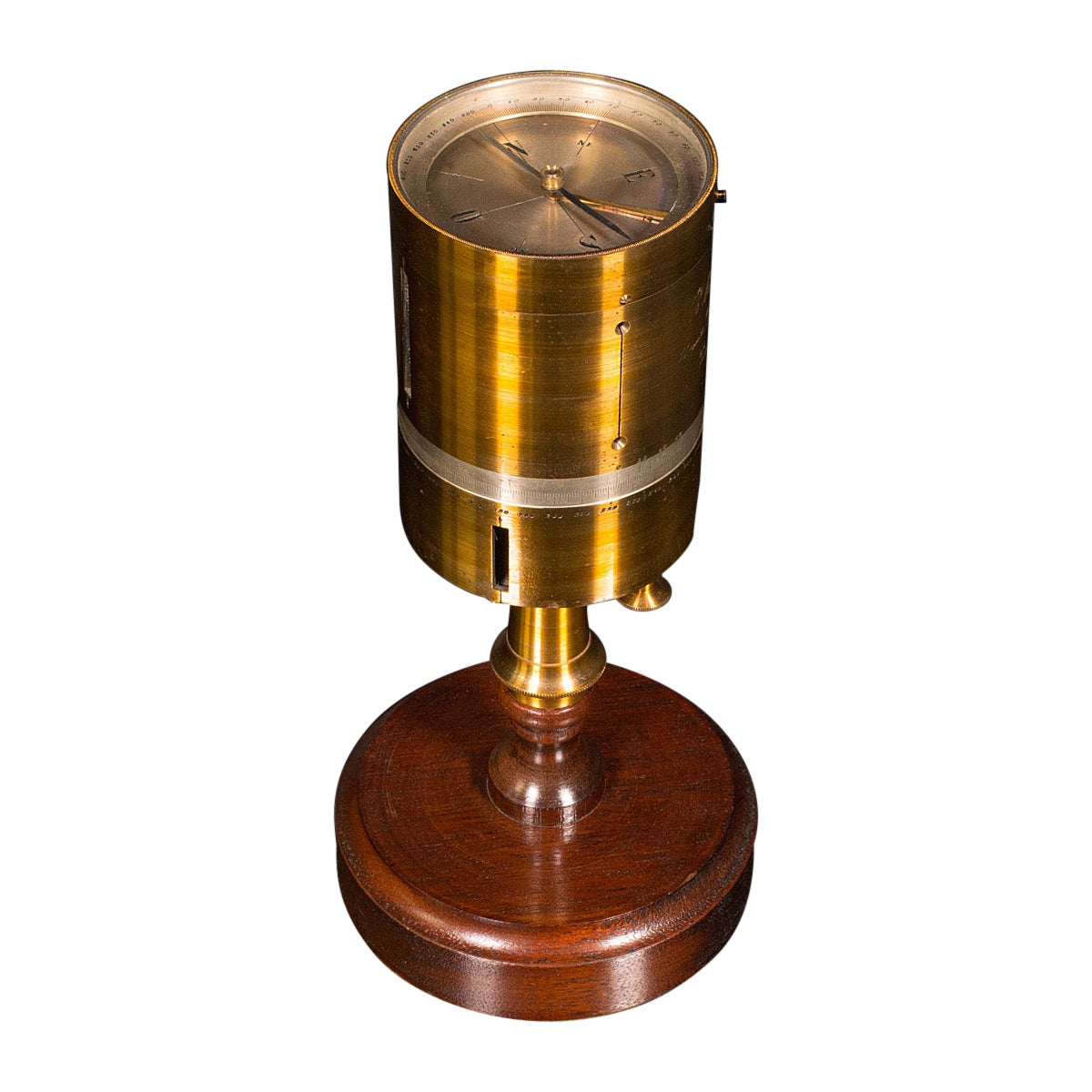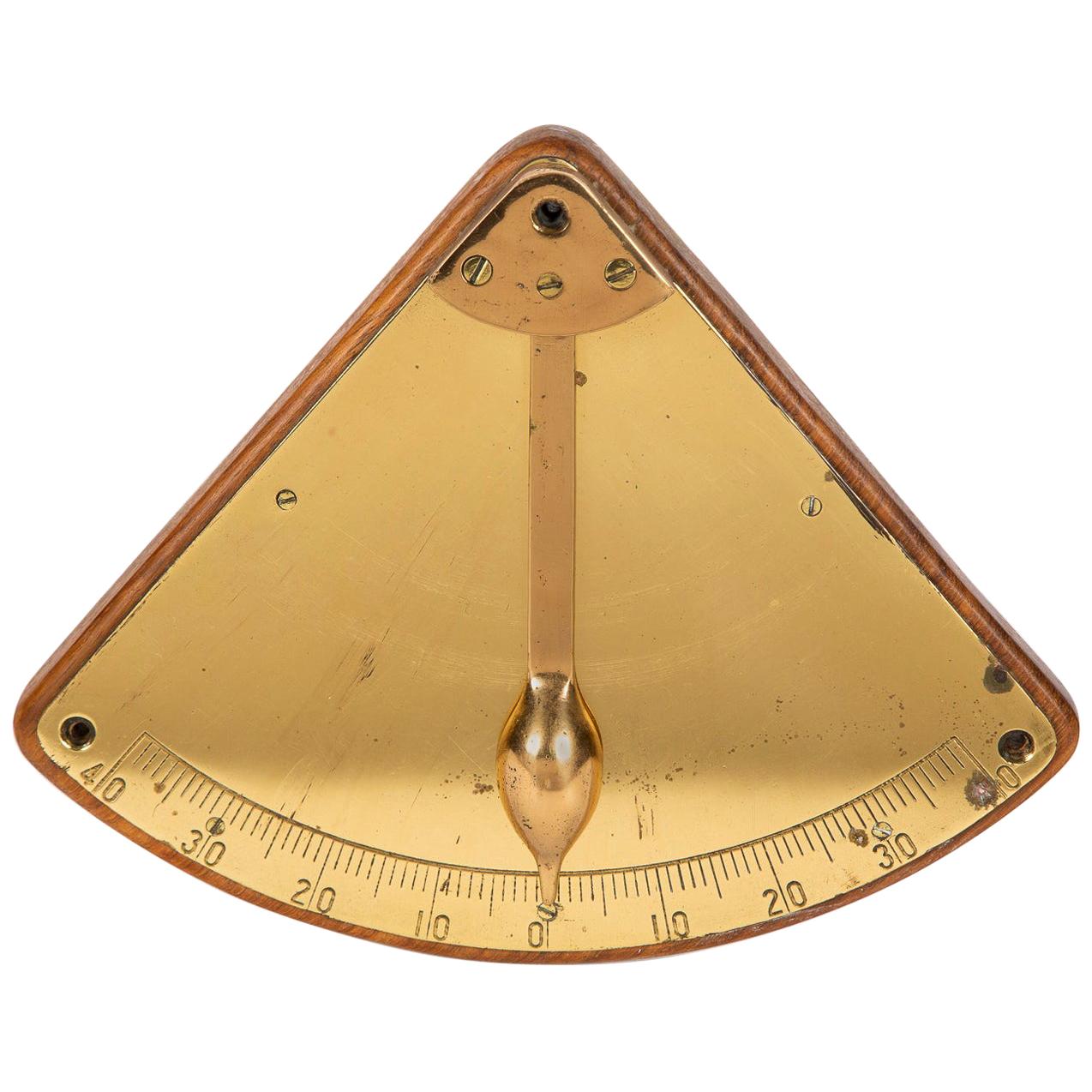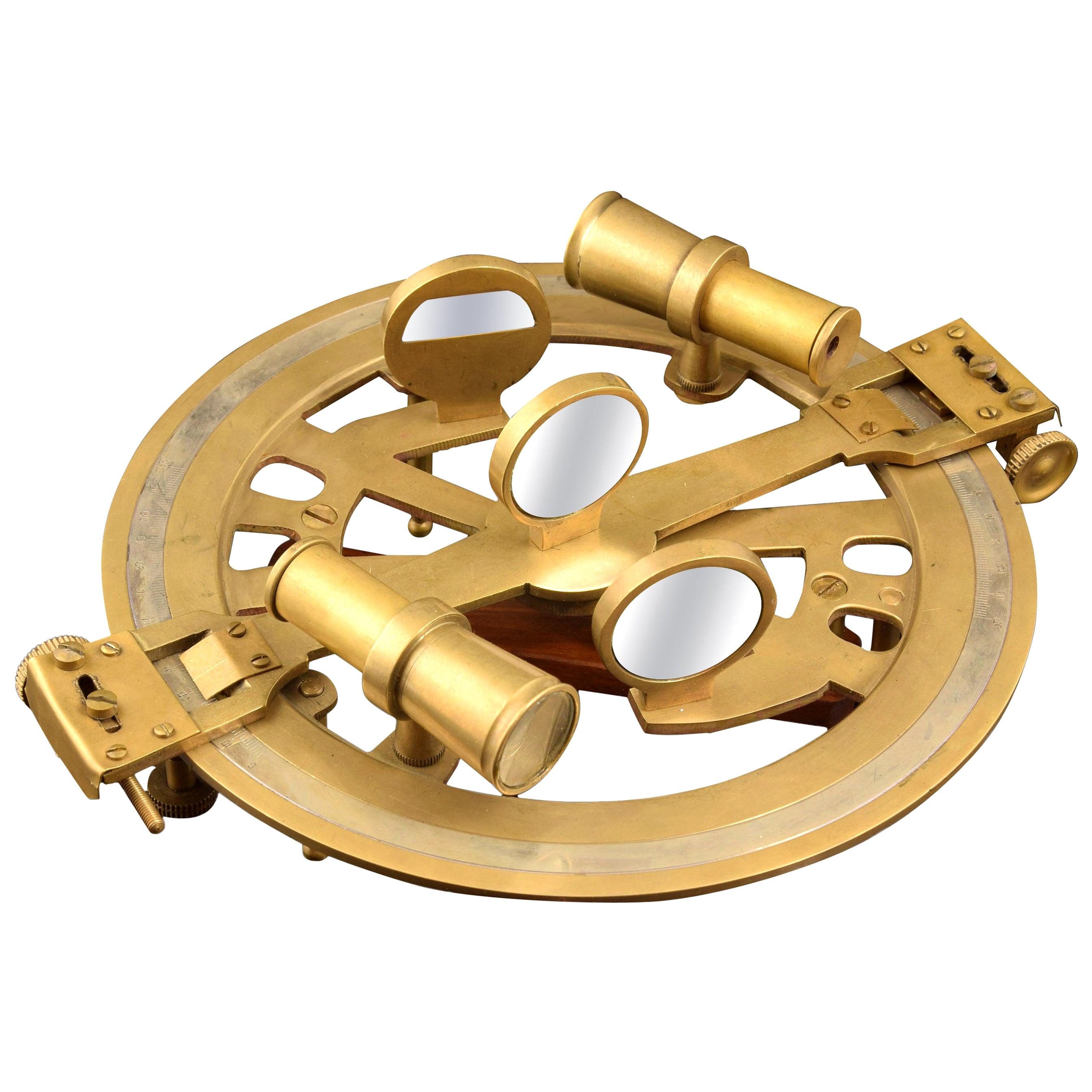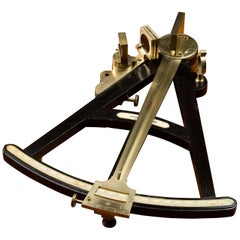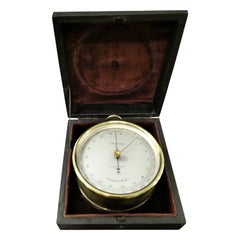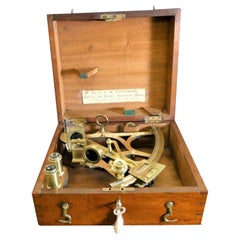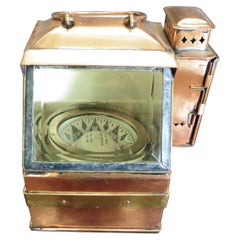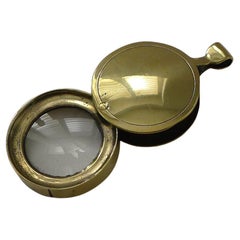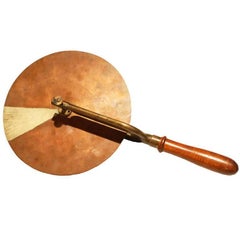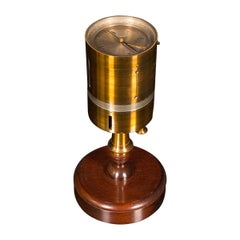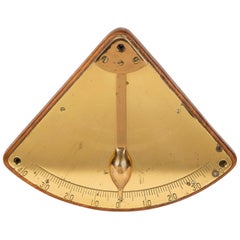Items Similar to Fine Circular Protractor by William Cary, London c.1810
Want more images or videos?
Request additional images or videos from the seller
1 of 11
Fine Circular Protractor by William Cary, London c.1810
$3,650.40
£2,650
€3,123.87
CA$5,019.85
A$5,582.56
CHF 2,922.21
MX$68,100.38
NOK 36,718.63
SEK 34,538.62
DKK 23,317.65
About the Item
William Cary, London Circular Protractor. C.1810
The protractor with geared knob turn for full diameter bar, double hinged scribe arms with shaped frame. Main wheel with four spokes and glass sight cross centre, full circumference inscribed divider to 360 degrees signed Cary, London to the bar. Adjustment screws to the arms and housed in it’s original mahogany case with hinged lid.
William Cary is listed as working in Strand, London from 1801 to 1825.
William Cary was an important scientific instrument maker, he trained under Jesse Ramsden (1735-1800) he produced numerous scientific instruments including mechanical calculators, measuring instruments, telescopes, microscopes and navigation and surveying equipment.
Instruments made by William Cary were used around the world including Russia and India. He also made instruments for the English chemist William Hyde Wollaston. After his death in 1825 the firm was taken over by Charles Gould who had trained under him.
- Creator:Cary (Manufacturer)
- Dimensions:Height: 1.5 in (3.81 cm)Diameter: 9.5 in (24.13 cm)
- Materials and Techniques:
- Place of Origin:
- Period:
- Date of Manufacture:1810
- Condition:Wear consistent with age and use.
- Seller Location:Norwich, GB
- Reference Number:Seller: SKU000011101stDibs: LU4037327705922
About the Seller
5.0
Vetted Professional Seller
Every seller passes strict standards for authenticity and reliability
1stDibs seller since 2018
65 sales on 1stDibs
Typical response time: 5 hours
Associations
The British Antique Dealers' AssociationLAPADA - The Association of Arts & Antiques Dealers
- ShippingRetrieving quote...Shipping from: Norwich, United Kingdom
- Return Policy
Authenticity Guarantee
In the unlikely event there’s an issue with an item’s authenticity, contact us within 1 year for a full refund. DetailsMoney-Back Guarantee
If your item is not as described, is damaged in transit, or does not arrive, contact us within 7 days for a full refund. Details24-Hour Cancellation
You have a 24-hour grace period in which to reconsider your purchase, with no questions asked.Vetted Professional Sellers
Our world-class sellers must adhere to strict standards for service and quality, maintaining the integrity of our listings.Price-Match Guarantee
If you find that a seller listed the same item for a lower price elsewhere, we’ll match it.Trusted Global Delivery
Our best-in-class carrier network provides specialized shipping options worldwide, including custom delivery.More From This Seller
View AllVernier Octant by John Todd, London
Located in Norwich, GB
Vernier Octant by John Todd, London, circa 1850.
An eleven inch radius vernier octant by John Todd with ebonised wooden frame with inset bone scale marked ...
Category
Antique 1850s English Victorian Nautical Objects
Materials
Brass
Victorian Brass Cased Aneroid Barometer by Stanley, London
By Stanley
Located in Norwich, GB
Victorian brass cased Aneroid barometer by Stanley, London.
Brass cased aneroid barometer housed in the original leather fitted case.
Silvered dial with original ‘blued’ st...
Category
Antique 1890s English Scientific Instruments
Materials
Brass
Nautical Vernier Sextant, G.W.Butters, London
Located in Norwich, GB
Vernier Nautical Sextant, G.W. Butters, London.
A fine curved frame vernier sextant, the polished silver arc signed G.W. Butters, London.
Eng...
Category
Antique Early 1900s English Nautical Objects
Materials
Brass
Pre World War 1 Nautical Compass by E.S.Ritchie
By E.S. Ritchie & Co
Located in Norwich, GB
Pre World War I Nautical Compass by E.S.Ritchie
Nautical compass mounted by a brass gimbal into a copper brass bound case with sloping glazed aperture with heavily bevelled glass. Flat brass bezel with five holding screws signed ‘E.S.Ritchie’ and numbered 5779. Side opening compartment for a lighted wick with drawer beneath.
The compass is mounted in a heavy painted brass bowl with very fine copper pivot supporting the floating direction card. A diaphragm is located in the base of the bowl for temperature compensation.
E.S.Ritchie founded the business in 1850 to manufacture mechanical, electrical and scientific instruments. In 1857 he turned his attention to navigational instruments and begun making marine bearing compasses for the U.S.Navy before the American civil war. At the time the British admiralty dry mounted nautical compasses were considered by all navies and commercial shipping companies as the highest technological standard of the day, however, in 1860 Ritchie had received a US patent for the first successful and practical liquid-filled marine compass...
Category
Antique Early 1900s Nautical Objects
Materials
Copper
Pre World War I Nautical Compass by E.S.Ritchie
Located in Norwich, GB
Pre World War I Nautical Compass by E.S.Ritchie
Nautical compass mounted by a brass gimbal into a copper brass bound case with sloping glazed aperture with heavily bevelled glass. Flat brass bezel with five holding screws signed ‘E.S.Ritchie’ and numbered 5779. Side opening compartment for a lighted wick with drawer beneath.
The compass is mounted in a heavy painted brass bowl with very fine copper pivot supporting the floating direction card. A diaphragm is located in the base of the bowl for temperature compensation. c.1910
E.S.Ritchie founded the business in 1850 to manufacture mechanical, electrical and scientific instruments. In 1857 he turned his attention to navigational instruments and begun making marine bearing compasses for the U.S.Navy before the American civil war. At the time the British admiralty dry mounted nautical compasses were considered by all navies and commercial shipping companies as the highest technological standard of the day, however, in 1860 Ritchie had received a US patent for the first successful and practical liquid-filled marine compass for general use. A major step forward in the technology of the compass. With the damping provided by the liquid, together with gimbal mounting, the floating card of the Ritchie compass...
Category
Vintage 1910s Nautical Objects
Materials
Copper
Nautical marine Sextant by Negretti and Zambra London
Located in Norwich, GB
Nautical Marine Sextant by Negretti and Zambra, London.
Brass and oxidised nautical sextant signed Negretti and Zambra, London.
This fine instrumen...
Category
Antique Early 1900s Nautical Objects
Materials
Brass
You May Also Like
Antique English Folding Brass Magnifying Glass c.1910
Located in Bath, GB
A brass folding pocket magnifying glass which is made also to be added to a chain or ribbon to be worn around the neck.
The lens has a good magnification and in lovey condition.
D...
Category
Vintage 1910s British Edwardian Scientific Instruments
Materials
Brass
Late 19th Century Physics Teaching Wheel
Located in Santa Monica, CA
These educational wheels, with copper and black painted surfaces, were used by Physics teachers in the late 19th century.
Please note we have two of these wheels available. One i...
Category
Antique 19th Century American Scientific Instruments
Materials
Copper, Brass
$450 / set
Antique Vineyard Setter's Compass, French, Brass, Surveyor's Instrument, C.1900
Located in Hele, Devon, GB
This is an antique vineyard setter's compass. A French, brass surveyor's instrument with mahogany case and stand, dating to the late Victorian period, c...
Category
Antique Late 19th Century French Scientific Instruments
Materials
Brass
Brass Ship's Inclinometer, circa 1910
Located in London, GB
A brass ship's inclinometer, circa 1910.
Scale in degrees from the vertical to 40° of tilt/list.
An inclinometer, or clinometer, is an instrument used for measuring angles of s...
Category
Early 20th Century English Nautical Objects
Materials
Brass
$661 Sale Price
20% Off
Circular Sextant, Decorative Piece, 20th Century
Located in Madrid, ES
The sextant is an instrument that allows to measure angles between two objects such as two points of a coast or a star, traditionally the sun of the earth and the horizon. Knowing th...
Category
Late 20th Century Spanish Other Nautical Objects
Materials
Metal, Other
Antique English Brass Cased Compass c.1900
Located in Bath, GB
A handsome cased late Victorian or Edwardian compass with hinged lid, the little button on the top used to open; just like a full hunter pocket watch.
The case is made from brass wi...
Category
Antique Early 1900s British Edwardian Scientific Instruments
Materials
Brass
More Ways To Browse
William Cross
Antique Scribe
William Gould
Telescope London
English Brass Telescope
Antique Microscope
Telescope Case
Gear Wheel
Brass Microscope
Surveying Instrument
Antique Microscopes Scientific Instruments
Antique Brass Microscopes
Antique Survey Instruments
Antique Surveying Instruments
Antique Brass Microscope Scientific Instruments
Antique Brass Surveying Instruments
Antique Protractors
Mechanical Calculator
